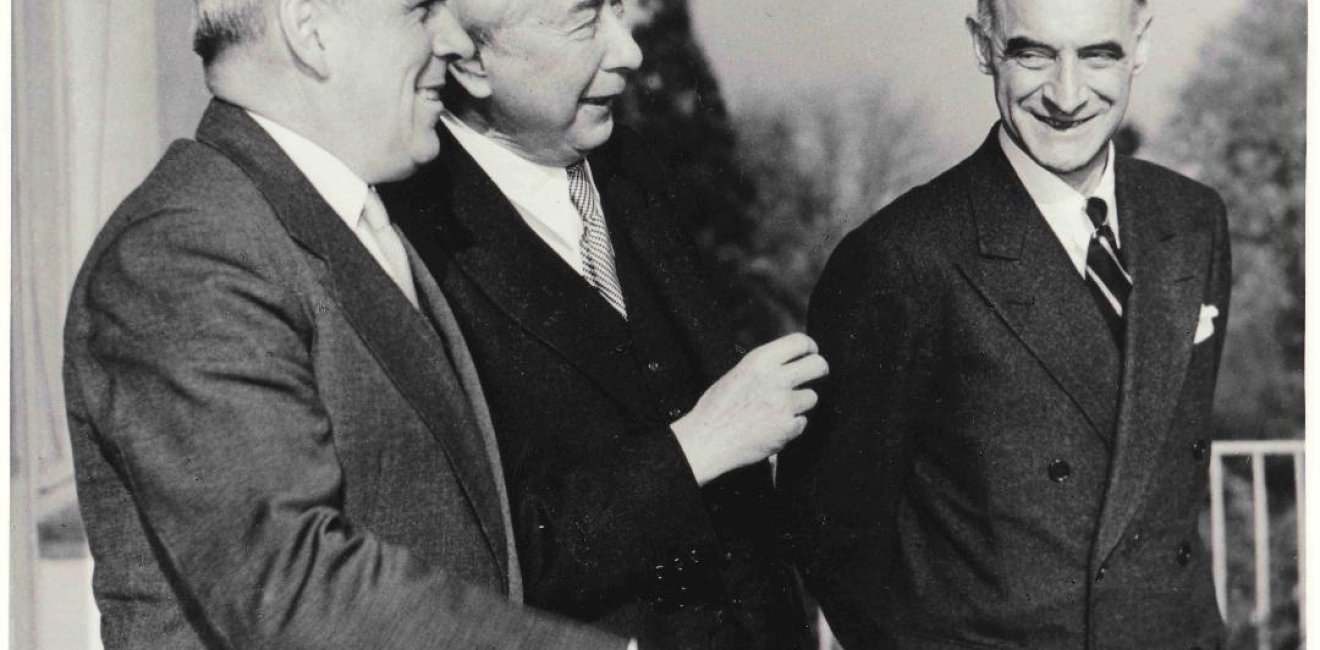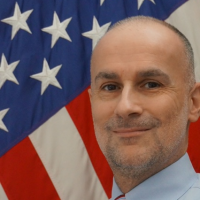Theodor Heuss was America’s favorite German. Shortly after the US Army occupied Heidelberg, Heuss’s hometown, the American military government appointed him minister of culture for the state of Württemberg Baden. When Heuss was elected president of West Germany in 1949, the American press praised his opposition to the Nazis and lauded his intent to make Germany “a living democracy.” And when Heuss visited the United States in 1958, President Dwight D. Eisenhower, the man who led the Allied forces to victory in World War II, welcomed him “with unusual warmth” to the White House.
Heuss’s cordial relationship with the United States may have had a covert side to it. A record of the East German intelligence service (“Stasi”) suggests that Heuss served as an informant of the US Army’s Counter Intelligence Corps from 1946 to 1947. According to the Stasi document, Heuss provided the Americans with information about the political situation in Württemberg Baden and received remuneration for his services. Eventually, the CIC discontinued its secret association with Heuss because his information proved of “little value.” Nonetheless, the East German document avers, the CIC kept his reports on file in case the Americans wanted “to put pressure” on Heuss in the future.
The CIC kept two dossiers on Heuss. Neither mentions his recruitment as an informant, but American intelligence records compiled amid the chaos of postwar Germany are often fragmentary and incomplete. The absence of evidence of Heuss’ recruitment in the CIC files per se must not be equated with the evidence of absence of a covert relationship between the Americans and the future president.
The information contained in the East German document probably originated with an American intelligence officer who defected behind the Iron Curtain around 1960 and was then debriefed by Soviet bloc officials. In a series of interviews, the anonymous defector betrayed an intimate knowledge of CIC operations in postwar Germany. He correctly identified numerous CIC employees, and he named a certain John H. Seitz as the individual who supposedly recruited Heuss in 1946. US Army records confirm Seitz’s identity and place him at Heidelberg at that time. There, he served as a “special agent,” i.e., an official authorized to recruit and handle informants.
Secret service records must be handled with care, and Soviet bloc intelligence was notorious for spreading malicious rumors about Western politicians. But in this case, disinformation appears unlikely. Soviet bloc intelligence typically sought to tarnish West German policy-makers by circulating real or invented stories about their collusion with the Nazi regime. By contrast, the charge of being a secret US agent would have carried little weight in staunchly pro-American West Germany. Also, the East German document is dated 1961, two years after Heuss had stepped down from the presidency. At that time, the East Germans would have had little to gain from portraying the former president as an American agent. On balance, the Soviet bloc document’s assertion about Heuss’s collaboration with American intelligence seems credible.
If Heuss served as a CIC informant, the extent of his work seems to have been limited. As the Stasi document notes, he shared with the Americans his insights into the political landscape of his home state. This information being rather general in nature, the CIC considered it of “little value” and decided to end its covert relationship with Heuss. If the term “informant” smacks of moral corruption and betrayal of trust, neither the records of the CIC nor those of the Stasi suggest his involvement in any operation of a compromising nature, such as the spying on a close associate.
Nonetheless, Heuss’s association with the CIC is significant. It highlights the pivotal role of American intelligence as a link between the Americans and the emerging West German political elite. Men like Konrad Adenauer, Willy Brandt, and Ernst Reuter worked closely with the American occupation authorities, and the ties woven between German policy-makers and US intelligence lasted well into the Cold War. Heuss’s cooperation with the CIC may have been brief, but it alludes to a much bigger story, the making of West Germany under the American occupation. In this story, American intelligence occupies a central chapter.
Theodor Heuss’s association with American intelligence was first reported by Klaus Wiegrefe in Der Spiegel. The journal Studies in Intelligence 64, no. 2 (2020) includes an article by the present author on the same subject: “The American Candidate: US Intelligence, Theodor Heuss, and the Making of West Germany’s First President.” The reporting of Der Spiegel as well as the present blog entry are based on “The American Candidate.”







